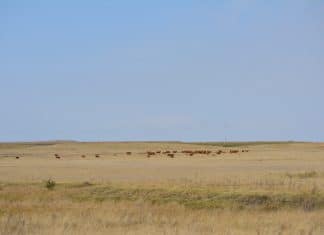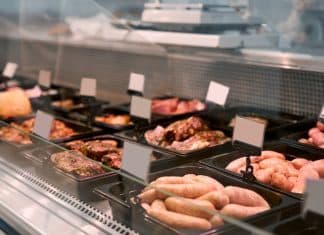Estimated reading time: 8 minutes
- The Sernick Group’s farmer development company, SerDev, is making great strides by empowering developing cattle farmers to commercialise.
- SerDev has three core focus areas, namely livestock farmer development, and value chain and community development. As part of their livestock farmer development focus area, they have implemented a sustainable growth model for developing farmers with formal land tenure and livestock.
- Patrick Sekwatlakwatla, head of transformation at the Sernick Group, is responsible for mentorship and marketing, and has been the driving force behind the programme since 2015. Patrick says apart from the training interventions and cultivating inherent expertise, these farmers are mentored over the long term to become part of the Sernick value chain.
- The group’s tier-based approach entails the creation of a database of farmers attending Sernick’s farmers’ days, after which the participating farmers are structured into three groups.
The Sernick Group’s farmer development company, SerDev, is making great strides by empowering developing cattle farmers to commercialise. This came after the group’s chairperson, Nick Serfontein, identified a need among developing farmers for information and support to expand their agricultural operations.
The group’s first farmers’ day was held in 2016 at the Sernick headquarters near Edenville in the Free State.

Read more about a co-operative between emerging cattle farmers here.
Empowering farmers
SerDev has three core focus areas, namely livestock farmer development, and value chain and community development. As part of their livestock farmer development focus area, they have implemented a sustainable growth model for developing farmers with formal land tenure and livestock.
Together with the Jobs Fund (a National Treasury initiative), SerDev implemented the highly successful Sernick Developing Farmers Programme in 2017, and has since been serving its purpose with well over 650 cattle farmers who have already received SETA accredited and technical training. At least 50 of these cattle farmers are now commercial producers with sustainable farming operations.
Patrick Sekwatlakwatla, head of transformation at the Sernick Group, is responsible for mentorship and marketing, and has been the driving force behind the programme since 2015. Patrick says apart from the training interventions and cultivating inherent expertise, these farmers are mentored over the long term to become part of the Sernick value chain. He believes the programme is serving its purpose, but says it was challenging at first, as farmers were reluctant to change their farming operations and practice livestock improvement.
A farmer to be reckoned with
Patrick believes the group’s valuable contribution towards the advancement of aspiring black farmers is evident in these farmers’ success. This is especially applicable to Maria Tswayi, who farms Bonsmara cattle near Hertzogville in the Free State. Maria applied and was accepted to the programme in 2017, the same year she obtained her 1 155ha farm, Scheerpan, through the government’s Proactive Land Acquisition Strategy (PLAS).
At that time, Maria was among 50 farmers who were chosen to be part of the Tier 3 training model, which entails theoretical and practical training combined with regular farm visits and the completion of progress reports.
Petro Naudé, project manager for the Jobs Fund and managing director of SerDEV, says Maria has proven herself over the years after a humble beginning, managing only a few head of cattle on communal land near Theunissen. Today Maria is an award-winning, fully-fledged commercial producer with well over 200 productive, high-quality Bonsmara cattle. She was crowned the Sernick Farmers Programme’s Farmer of the Year for 2021/22. This is the second consecutive year in which her hard work has been recognised – she won the Female Farmer of the Year and Overall Farmer of the Year awards in 2020/21.
Patrick is also on the competition’s panel of judges. He and two other judges, Tebogo Molele, senior agricultural mentor at the group, and Solomon Xaba, a mentor for Tier 3 farmers, all agree that the competition was stiff and the competitors of outstanding quality. Maria excelled and emerged victorious after having met the strict criteria.
Petro says Maria at first completed a yearlong programme (NQF 2) in mixed farming and has since been one of the programme’s exemplary farmers.

Advancing to higher levels
The group’s tier-based approach entails the creation of a database of farmers attending Sernick’s farmers’ days, after which the participating farmers are structured into three groups, Patrick explains.
Tier 1 comprises of farmers who farm on commonages, whereas Tier 2 farmers have exclusive access to land and are able to accommodate less than 100 large stock units. Tier 3 farmers, who can accommodate more than 100 head of cattle on the land they have access to, received 35 cows and a bull as ‘rental’ herd, as well as basic infrastructure such as handling facilities and water access on their farms. A total of 40% of the offspring of those cows is taken as payment over the next four years, leaving farmers with the remaining 60% to grow their herds. They are also coached in finance and management skills.
Patrick says Maria is one of eight beneficiaries from the Tier 3 level who advanced to the Tier 4 level. These farmers become part of Temong, which owns a 26% stake in the Sernick Abattoir.
“SerDev has completed the five-year Jobs Fund programme in the Free State, Gauteng and North West, and will maintain the rental herds and support the Tier 3 commercial farmers for four years,” says Petro. “The company, through the Sustainable Agri NPC and Absa, is working on empowering another 50 farmers in these provinces.”
Read more about the Sernick Farmer Development programme here.
The criteria
Patrick explains that farm management is among the competition criteria according to which farmers are judged. “We check whether they maintain rotational grazing in camps, pasture management, and follow proper programmes – for example a winter and summer calving or mating season. Their record-keeping abilities are also taken into account.”
Maria previously managed two breeding seasons, but started to phase out her winter breeding season, opting instead to divide her herd into two groups and then placing bulls with these groups a few months apart. This is to avoid calving in March, which puts cows under pressure as they are trying to maintain their body condition while weaning their calves – all during the harsh winter months.
The first group of cows go the bull from October to December, and the second group from January to the end of February. Maria has had great success and managed to achieve a 100% conception rate and a weaning rate of 97 since 2019. She also maintains a zero mortality rate.
“We also judge the participants on the animals’ general body condition score and whether they follow suitable vaccination and supplement programmes. Maria’s cattle had an average body condition score of between 3 and 4.”
The farmer’s ability to manage livestock improvement is another essential criterion. “We are trying to do away with inbreeding and we want our farmers to improve their animals. Maria is doing very well in this regard.”

Vaccines and supplements
Patrick says Maria’s ability to maintain a healthy, disease-free herd contributes to her success. She follows a strict vaccination programme, as well as a three-phase supplementary feed programme similar to what is used by Sernick Bonsmara.
Ticks are a major concern and livestock are dipped every week – various pour-ons are used to avoid tick resistance. Animals receive a multi-vitamin booster during winter. In January, they are vaccinated with Supavax to protect them against anthrax, botulism and blackleg; in September, they are vaccinated against lumpy skin disease and Rift Valley fever. Heifers receive an RB51 vaccine against brucellosis when they are weaned at six months at an average weight of between 180 and 200kg. Afterwards they are sold to Sernick’s feedlot.
Grazing strategy
Maria divided her farm into 13 camps, ranging from 90 to 110ha in size, and leaves some of the camps unused. Rotational grazing is much slower in summer with animals left in a camp for a maximum of one month. In winter, the cattle graze the camp for a shorter period to avoid overgrazing.
The herd receives a ready-mixed winter lick from Sernick from April to October in order to maintain their body condition. Once the calving season arrives and cows produce more milk, they receive a production lick, also from Sernick. Livestock are fed a summer lick from mid-October and phosphate is also supplemented.
Maria says the programme has allowed her to gain valuable knowledge about the industry, animal production and obtaining funding. This allows her to share her knowledge with other developing farmers. – Christal-Lize Muller, Stockfarm
For more information, contact Maria Tswayi on 083 968 9595 or mokoni04@gmail.com, or visit www.serdev.co.za.







